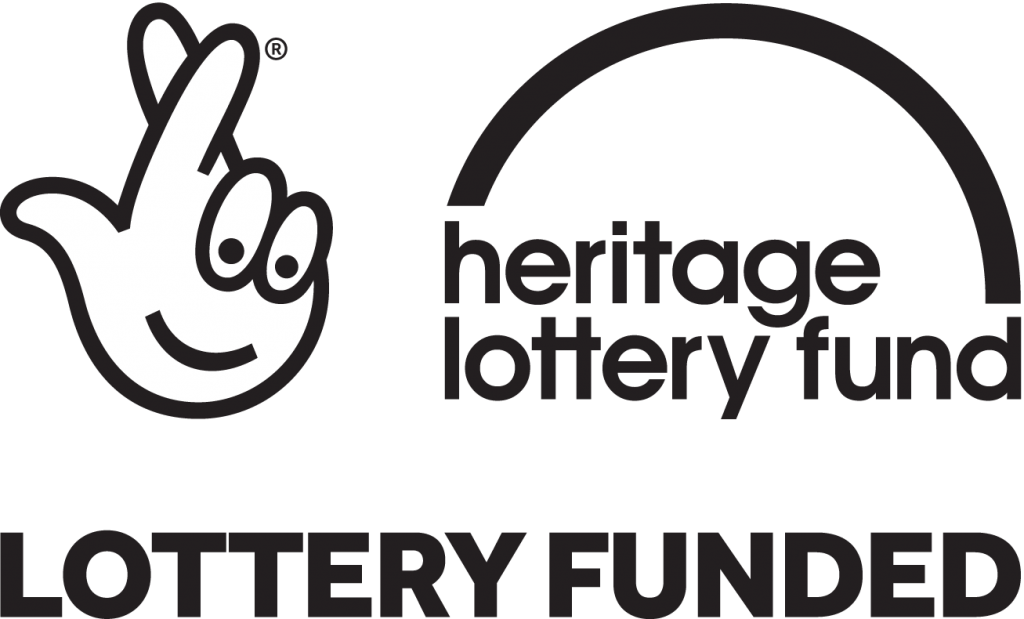
The earliest mention of St Margaret Lothbury is from 1185. The patronage of the church belonged to the abbess and convent of Barking, Essex until the Dissolution, when patronage passed to the Crown. The church was rebuilt and extended over the river Walbrook in 1440 but suffered as did so many of London’s churches in the Great Fire of London of 1666 following which, it was rebuilt by Christopher Wren from 1683 to 1692. As some churches around St Margaret’s were demolished under the Union of Benefices Act, St Margaret’s benefited from acquiring some of the interior furnishings of these churches. The church now houses an outstanding collection of seventeenth century fittings, many by the sculptor and wood carver Grinling Gibbons. It is one of the few Wren churches that sustained only minor damage during the Second World War.
Use the map icon to view a floor plan of the church. Click or tap on the plan’s numbers for details of the church’s most interesting features.
1. The Tower & Spire
1. The Tower & Spire
1. The Tower & Spire
The Tower & Spire
The tower was designed by Wren. In 1698–9 the top stage of the tower with large belfry openings and all of the spire were added, this work was probably designed by Robert Hooke. The tower and spire were refurbished, with help from the Heritage Lottery Fund, in 2018.
Hooke was Surveyor to the City of London and chief assistant to Christopher Wren, in which capacity he helped Wren rebuild London after the Great Fire. He also worked on the design of London’s Monument to the fire, the Greenwich Royal Observatory, Montagu House in Bloomsbury, and the Bethlem Royal Hospital. Hooke's collaboration with Christopher Wren also included St Paul’s Cathedral, whose dome uses a method of construction conceived by Hooke. Hooke was also a scientist and mathematician, he was curator of experiments of the Royal Society and Gresham Professor of Geometry. In 1660 Hooke discovered the law of elasticity, known as Hooke’s law.
The stone tower of St Margaret’s rises 5 floors above street level, with a leadwork spire which is an obelisk standing on a domed base, with gilded decorative finial piece and weathervane. The spire is a timber frame, covered by leadwork that is mostly original, dating from 1699. A project to undertake urgent repairs to the leadwork in 2018 has repaired the large sheets to the four sides of the upper dome which had all slipped; the many fixings had also slipped or become loose. During the repair project several examples of graffiti were found, where previous workmen had marked their names, dates and in some cases apotropaic marks. Apotropaic marks are symbols or patterns scratched into the fabric of a building to keep witches out and are also known as witches marks. Whilst the scaffolding was up repairs were also made to the stone work of the tower, the clock was restored and the weathervane, finial and ornamental balls were re-gilded.
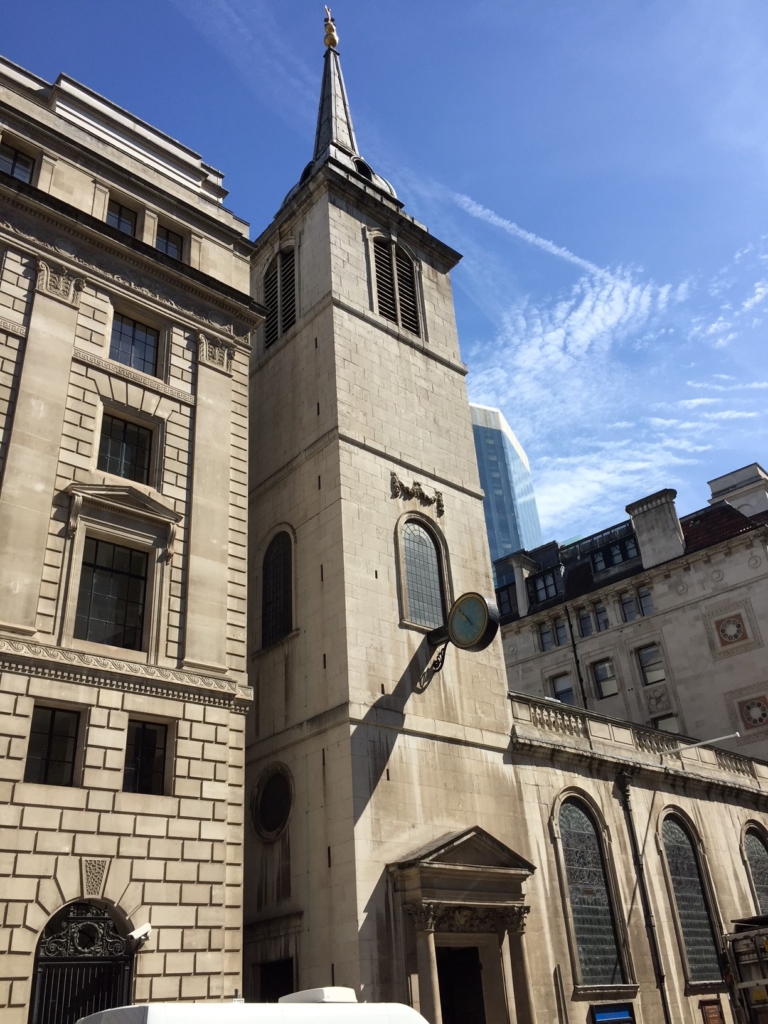
The tower
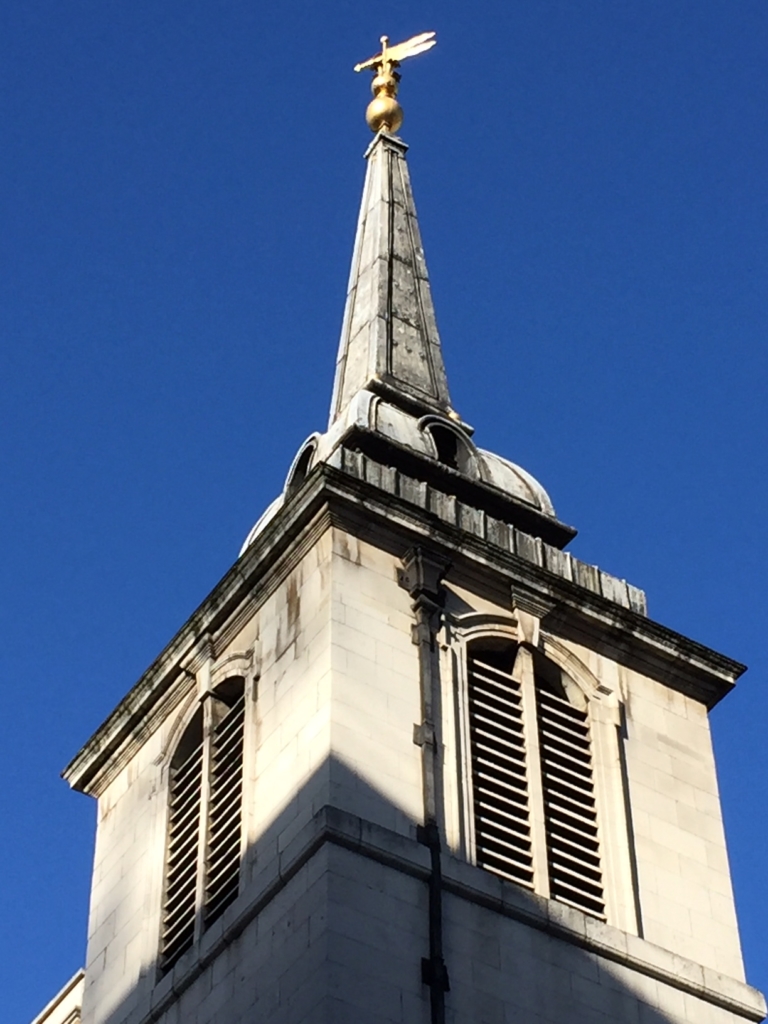
The spire
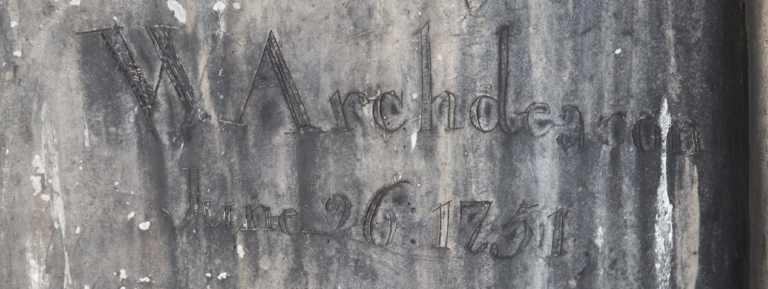
Graffiti found on the tower
2. Baptismal Font
2. Baptismal Font
2. Baptismal Font
Baptismal Font
The baptismal font, believed to be by Grinling Gibbons (1648–1721), came from St Olave, Old Jewry, after that church was partially demolished in 1887 except for the tower and west wall, which remain today. The font is a carved bowl with cherub heads at each corner and the four sides are decorated with Adam and Eve, the dove returning to the ark, the baptism of Jesus and the baptism of the Ethiopian eunuch by Philip. Gibbons was a Dutch-British sculptor and wood carver, born and educated in Holland of English parents; his father being a merchant. Gibbons was a member of the Drapers' Company of London. His other works can be found at Windsor Castle, Hampton Court Palace and St Paul’s Cathedral, to name a few.
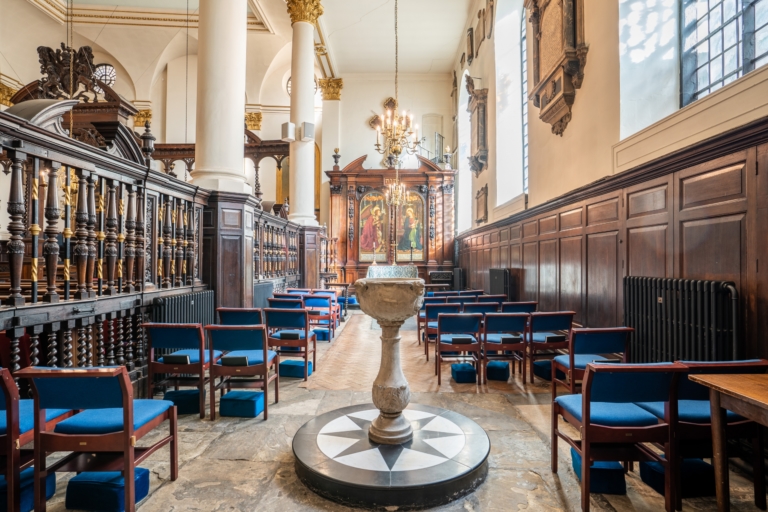
The baptismal font
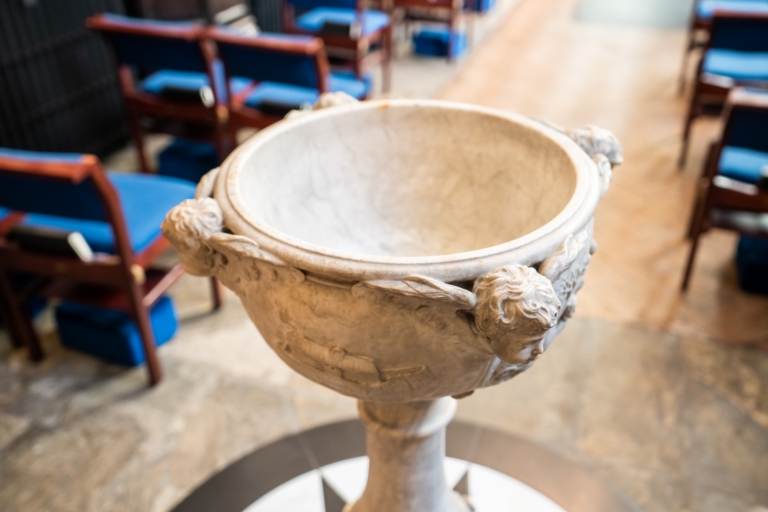
The baptismal font
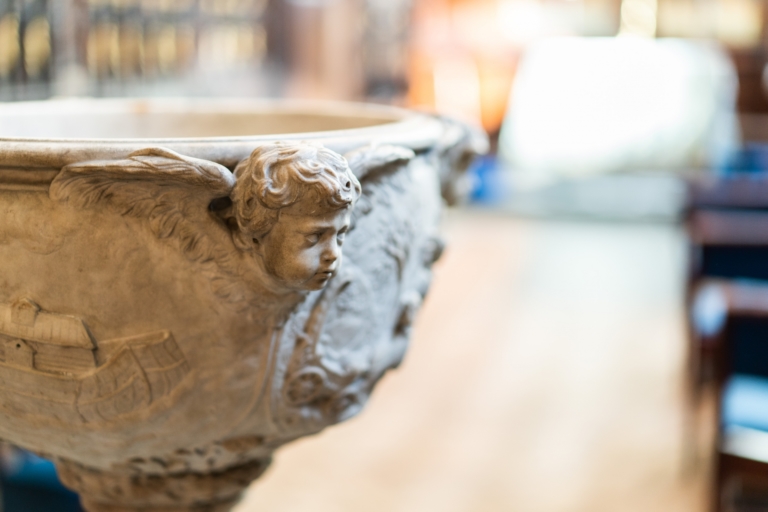
The baptismal font
3. The Pulpit and Choir Screen
3. The Pulpit and Choir Screen
3. The Pulpit and Choir Screen
The Pulpit and Choir Screen
Of the subsequent additions to the church the most splendid is the choir screen, one of only two in a Wren church, erected originally in the Church of All Hallows the Great, Thames St. in 1683-84. The choir screen, along with the tester above the pulpit, was moved to St Margaret’s in 1894 when the Church of All Hallows the Great was demolished, to allow widening of Thames Street and building of the City of London Brewery on the site.
The Stuart royal arms are part of the screen which was originally donated by the German merchant Theodore Jacobson in c.1685. The eagle is supposed to refer to Herr Jacobson’s nationality.
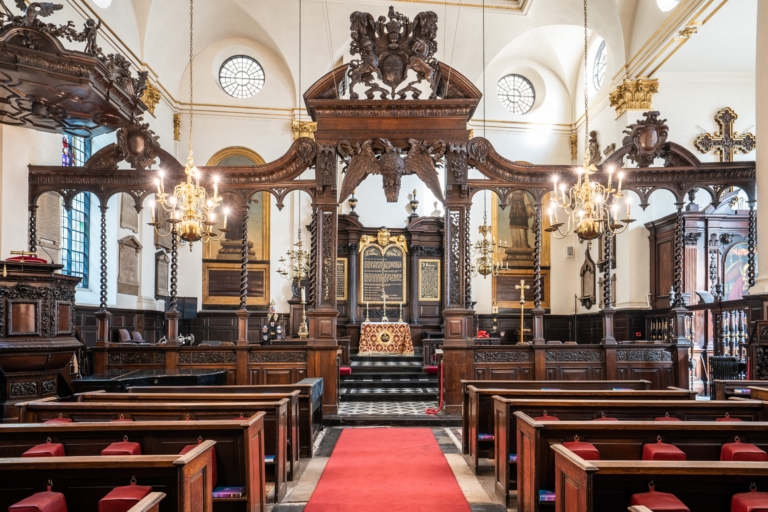
The choir screen
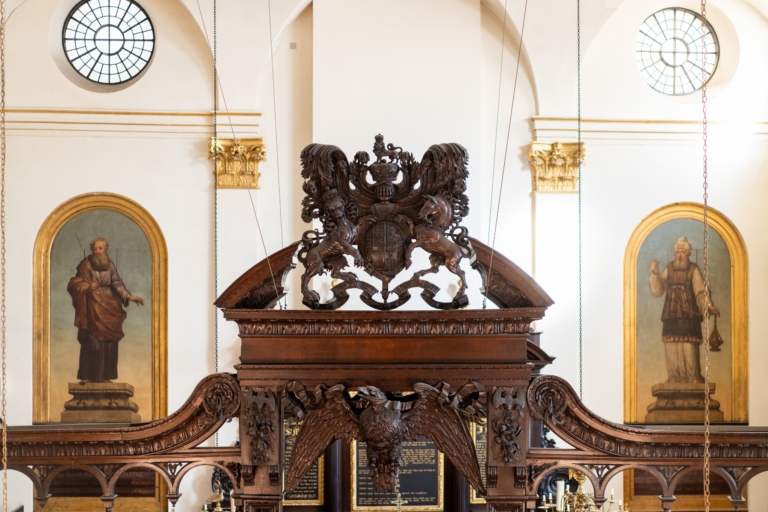
The choir screen
4. Sword Rests
4. Sword Rests
4. Sword Rests
Sword Rests
The historic churches of the City of London contain many unusual and interesting furnishings and fittings. Among the most intriguing are the sword rests which are present in so many of the churches in the “square mile”, but in very few other locations in the country. Sword rests, or sword stands as they are sometimes called, were originally installed in City churches to hold the Lord Mayor's sword of state when he visited a different church every Sunday, a practice which ceased in 1883. The Lord Mayor would be accompanied by various officers of the City, including the swordbearer, who would place the ceremonial sword upright in a sword rest, most commonly attached to the front pews. The oldest surviving rest in the City of London dates from 1664 and the majority were installed in the 18th and 19th centuries. There are 58 surviving sword rests originating from City churches or livery halls.
St Margaret’s Sword Rests are made of wrought iron and are of an elaborate design style.
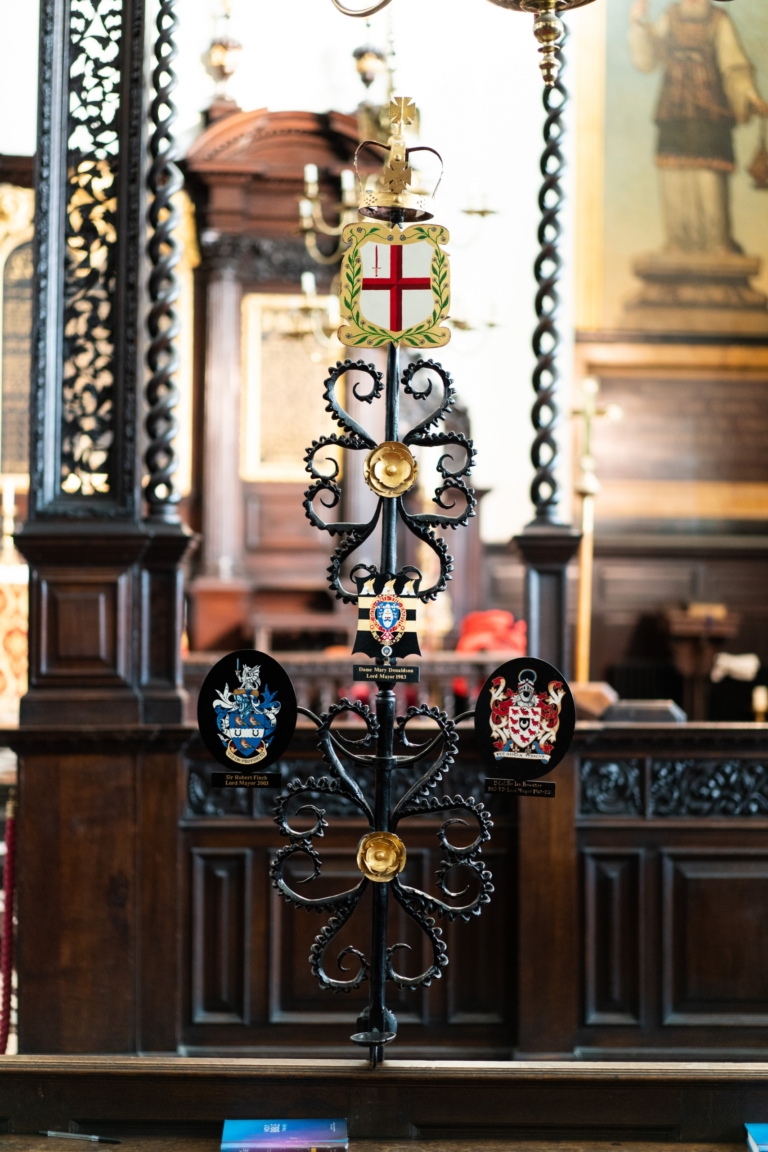
Sword rests
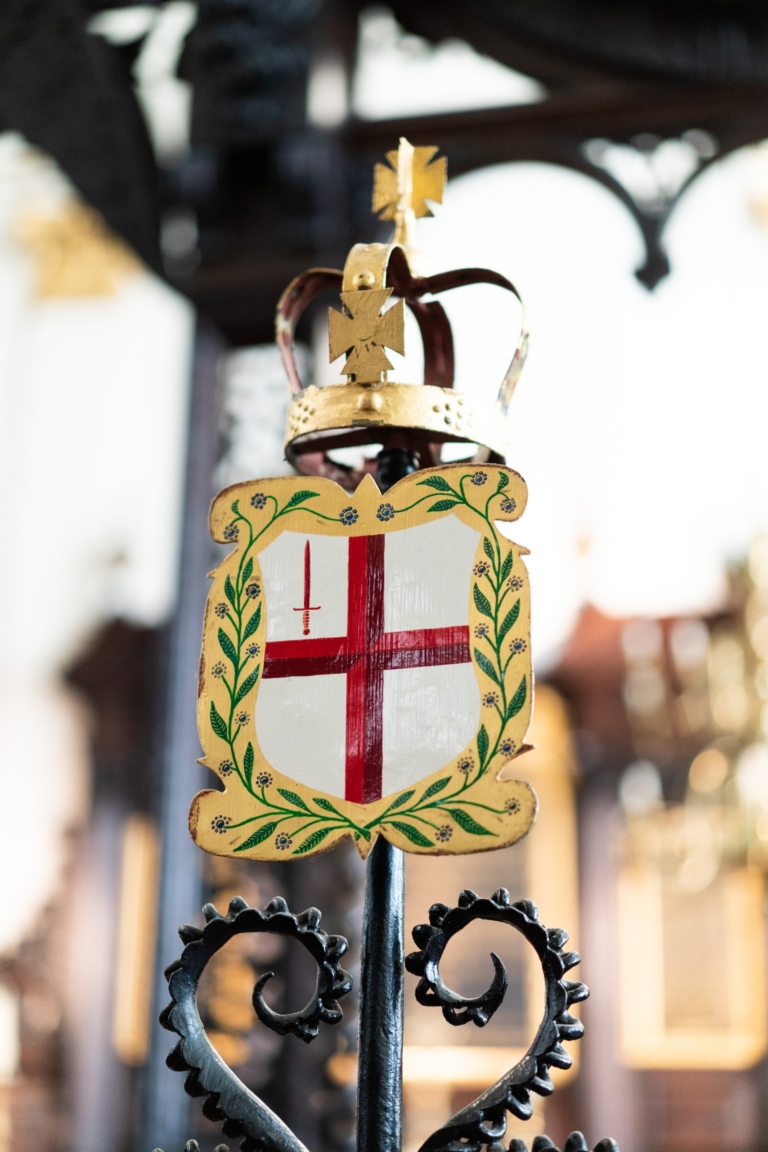
Sword rests
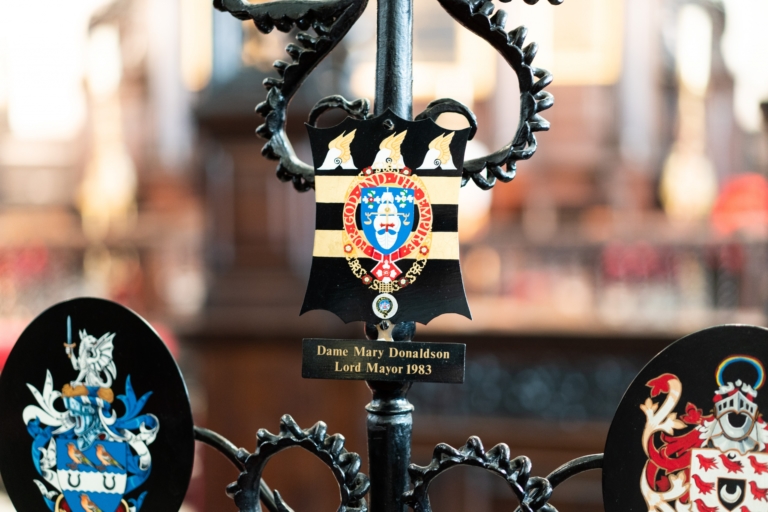
Sword rests
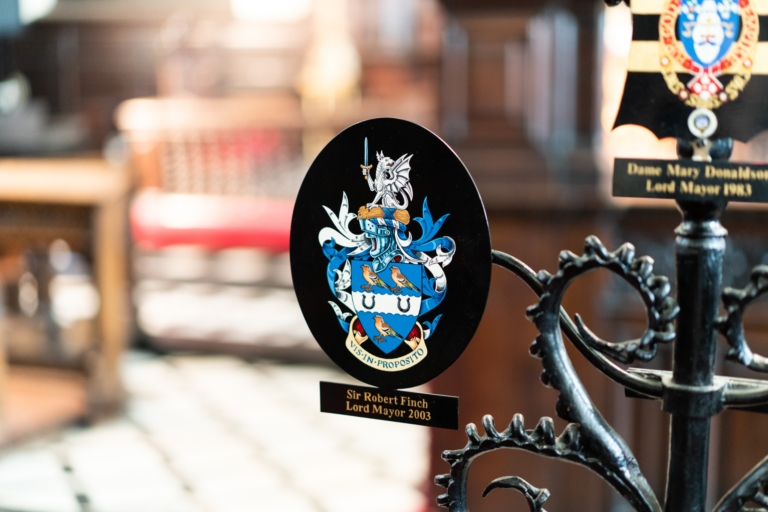
Sword rests
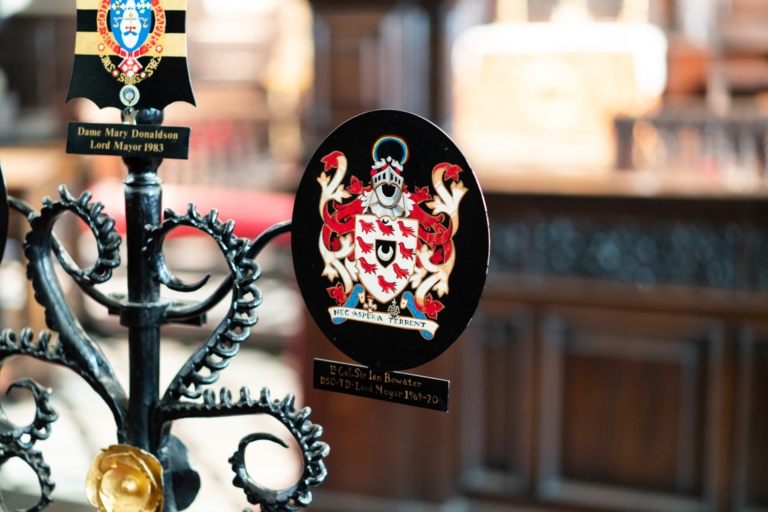
Sword rests
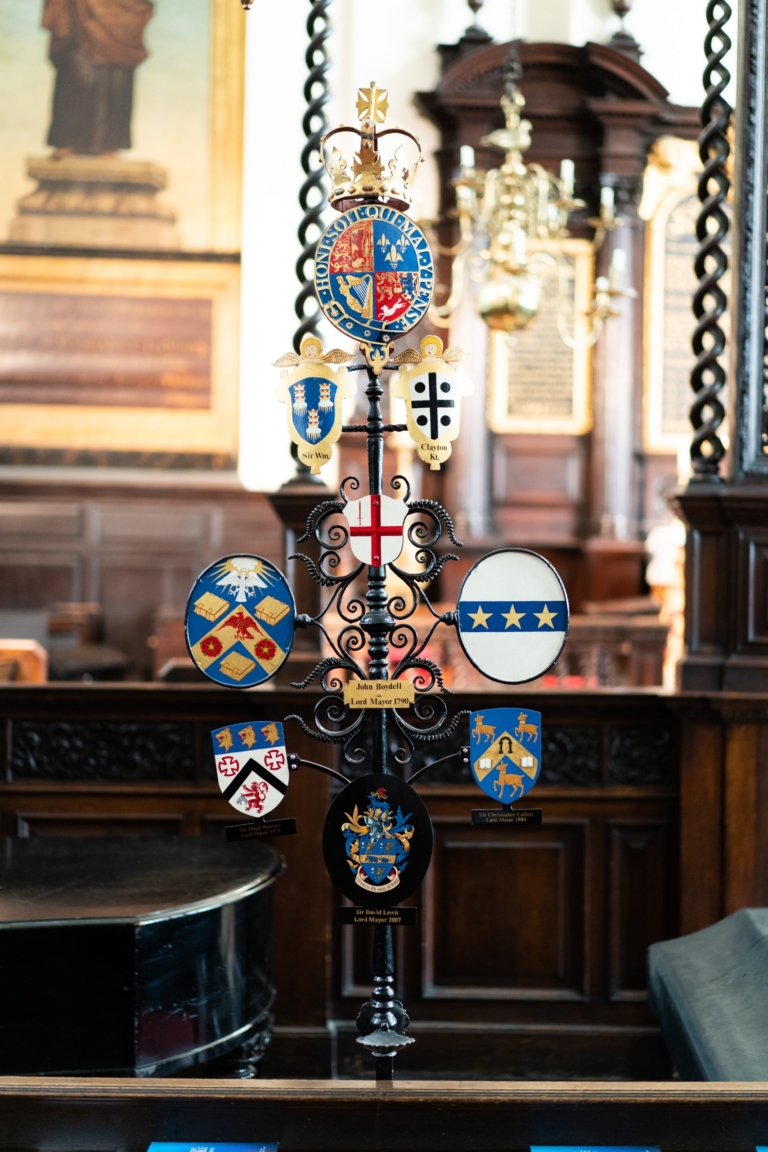
Sword rests
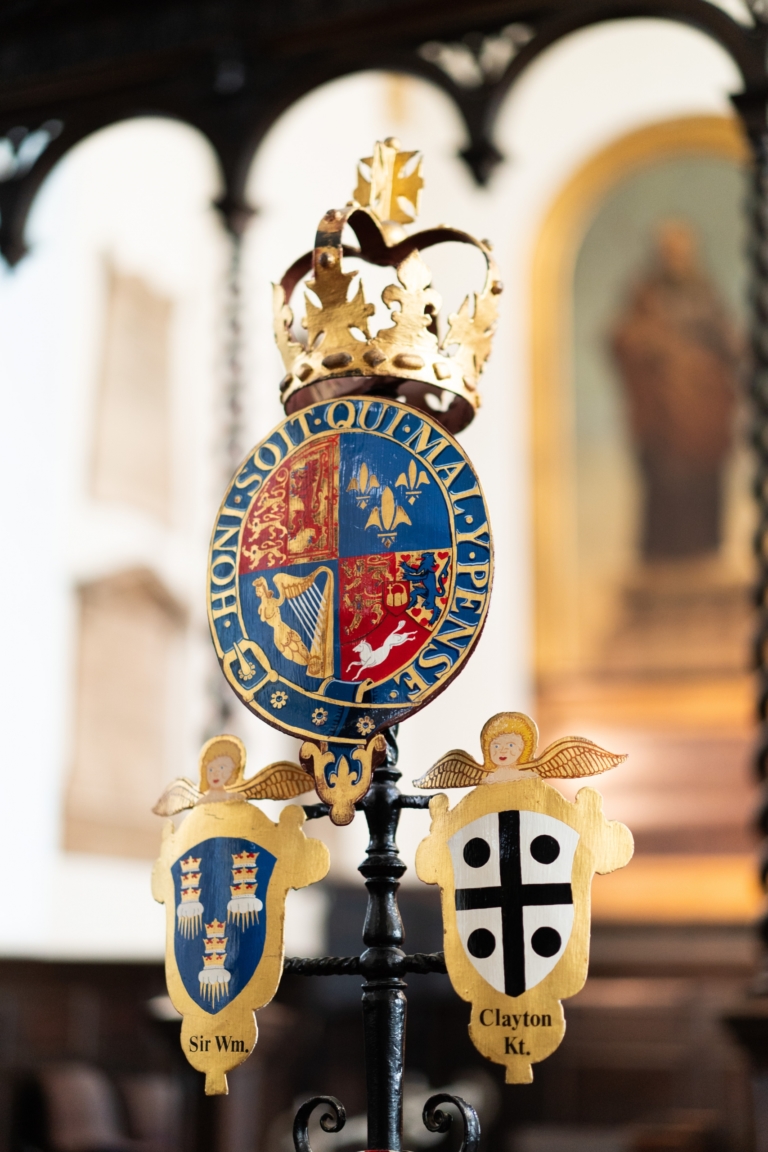
Sword rests
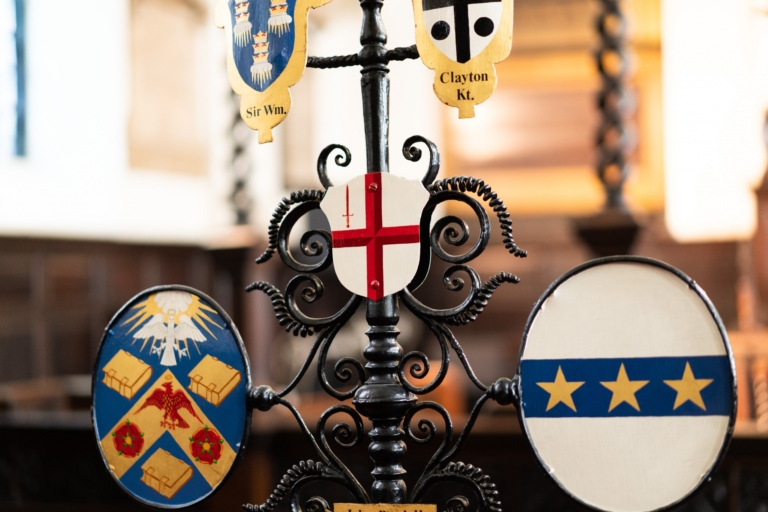
Sword rests
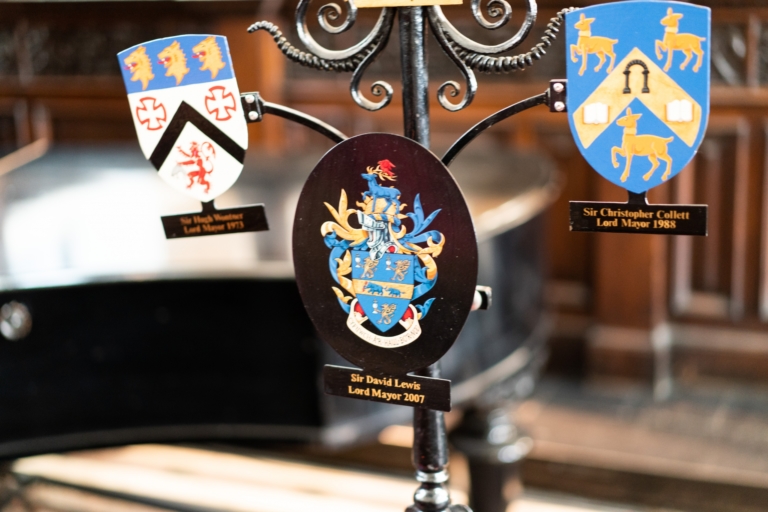
Sword rests
5. Bust of John Boydell, Mayor of London
5. Bust of John Boydell, Mayor of London
5. Bust of John Boydell, Mayor of London
Bust of John Boydell, Mayor of London
The bust of John Boydell, Lord Mayor 1791, was designed by Thomas Banks and carved by F. W. Smith. It came from St. Olave, Old Jewry.
John Boydell (1720–1804) was an 18th-century British publisher noted for his reproductions of engravings. He helped alter the trade imbalance between Britain and France in engravings and initiated a British tradition in the art form. A former engraver himself, Boydell promoted the interests of artists as well as patrons and as a result his business prospered.
The son of a land surveyor, Boydell apprenticed himself to William Henry Toms, an artist he admired, and learned engraving. He established his own business in 1746 and published his first book of engravings around the same time. Boydell did not think much of his own artistic efforts and eventually started buying the works of others, becoming a print dealer as well as an artist. He became a successful importer of French prints during the 1750s but was frustrated by their refusal to trade prints in kind. To spark reciprocal trade, he commissioned William Wollett's spectacular engraving of Richard Wilson's The Destruction of the Children of Niobe, which revolutionised the print trade. Ten years later, largely as a result of Boydell’s initiative, the trade imbalance had shifted, and he was named a fellow of the Royal Society for his efforts.
In the 1790s, Boydell began a large Shakespeare venture that included the establishment of a Shakespeare Gallery, the publication of an illustrated edition of Shakespeare’s plays, and the release of a folio of prints depicting scenes from Shakespeare's works. Some of the most illustrious painters of the day contributed, such as Benjamin West and Henry Fuseli.
Throughout his life, Boydell dedicated time to civic projects: he donated art to government institutions and ran for public office. In 1790 he became Lord Mayor of London. The French Revolutionary Wars led to a cessation in Continental trade at the end of the 1790s and without this business, Boydell’s firm declined and he was nearly bankrupt at his death in 1804.
Boydell also provided one of the sword rests, originally at St Olave Jewry.
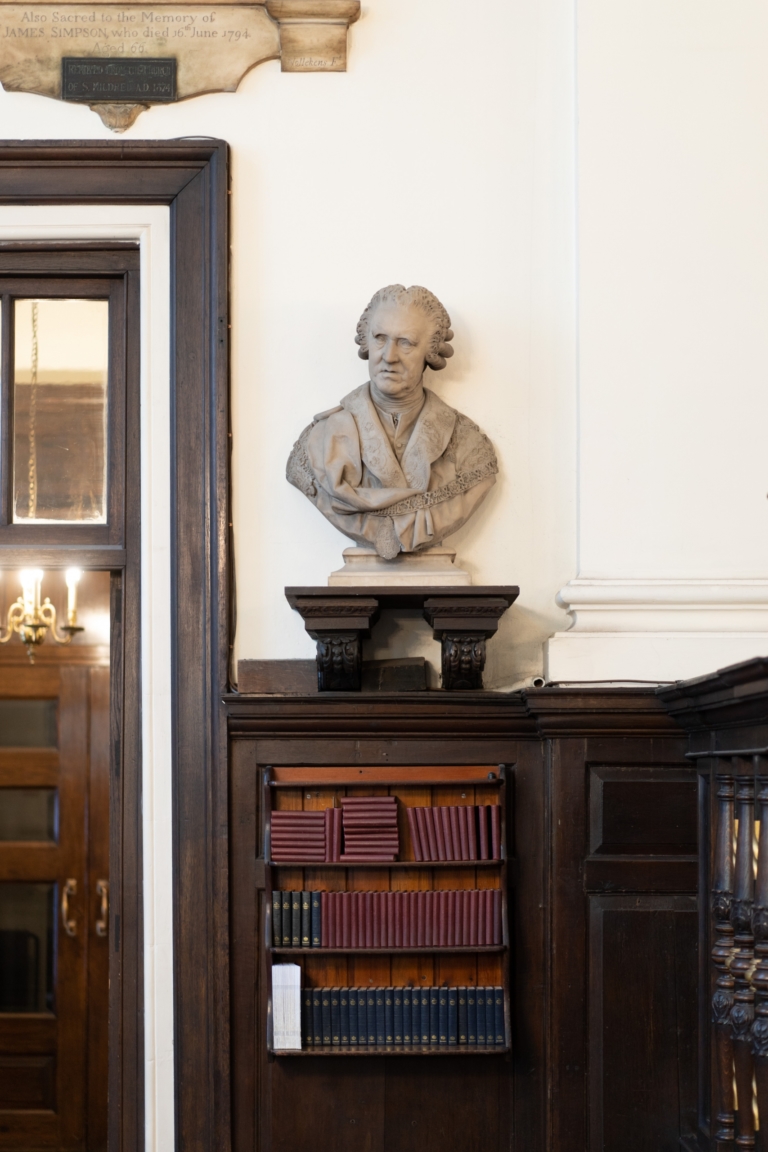
Bust of John Boydell, Mayor of London
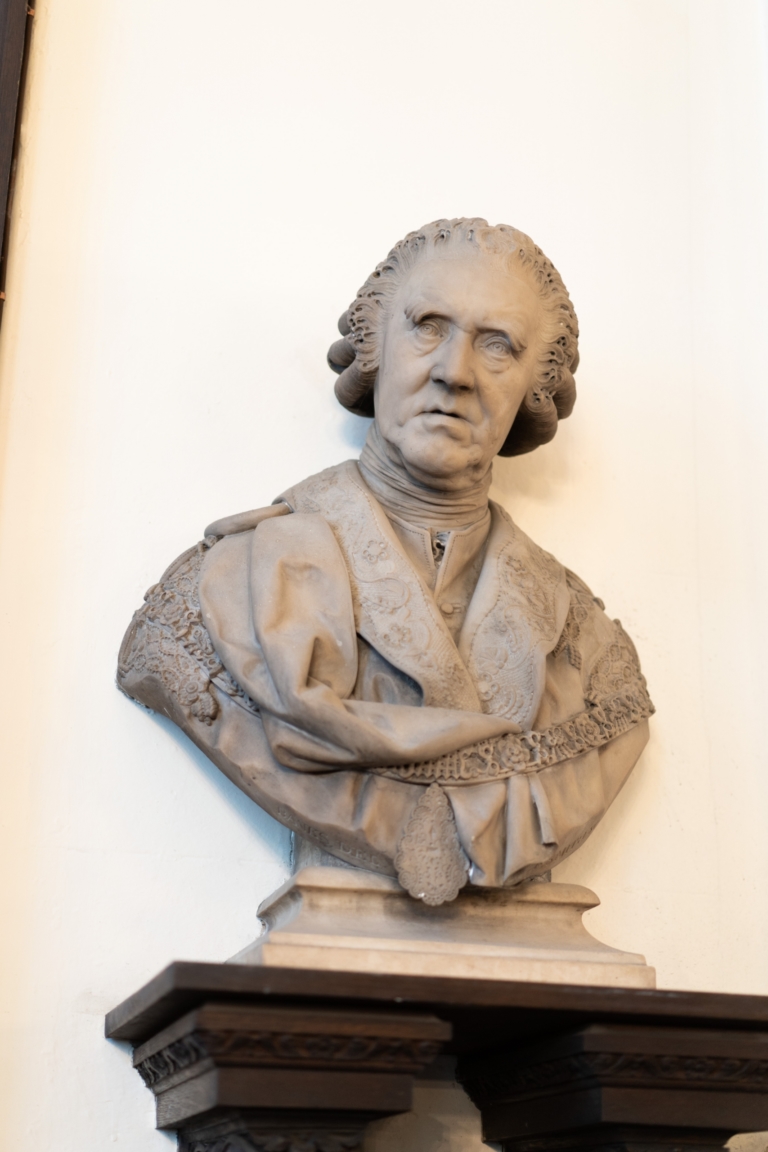
Bust of John Boydell, Mayor of London
6. Stained Glass Windows
6. Stained Glass Windows
6. Stained Glass Windows
Stained Glass Windows
Our stained glass windows celebrate St Margaret’s links with a number of City Livery Companies and Institutions. The windows were donated by either the Livery Companies or their Masters, for the following Livery Companies: The Worshipful Company of Glovers; The Worshipful Company of Tylers and Bricklayers; The Worshipful Company of Tin Plate alias Wire Workers; The Worshipful Company of Scientific Instrument Makers; The Worshipful Company of Armourers and Brasiers; and the Institute of Chartered Accountants in England and Wales.
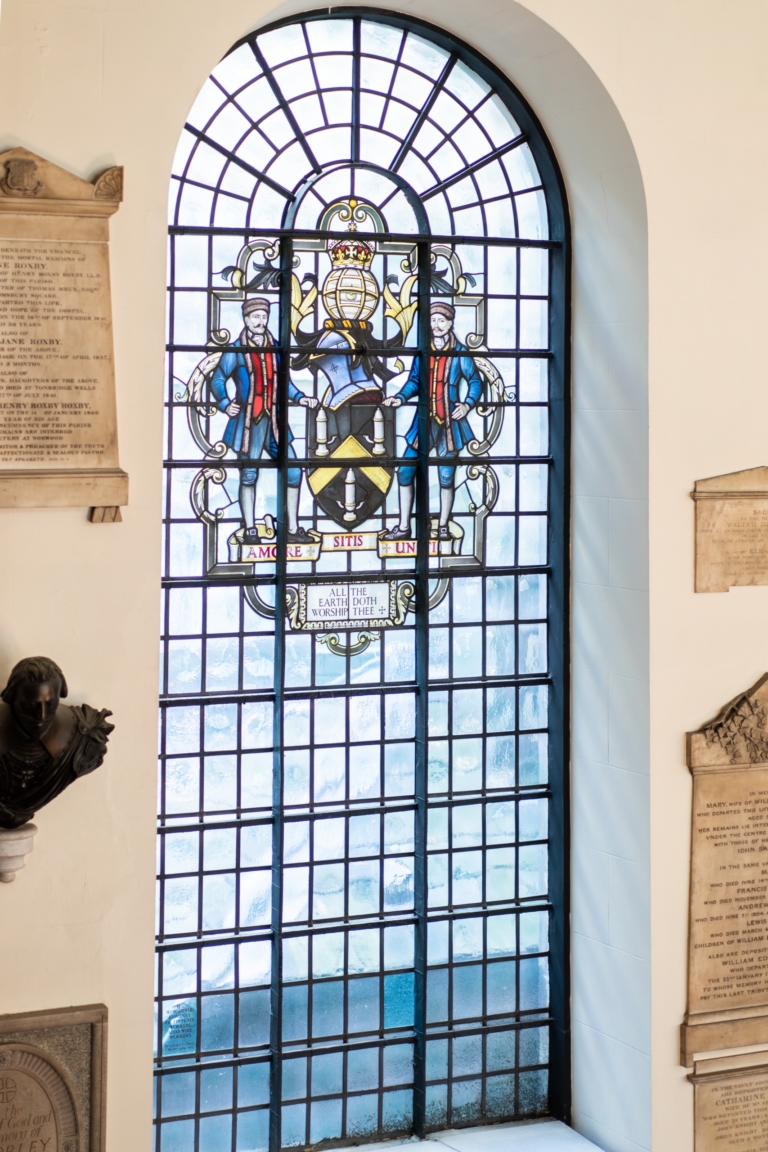
6a: The Worshipful Company Tin Plate alias Wire Workers
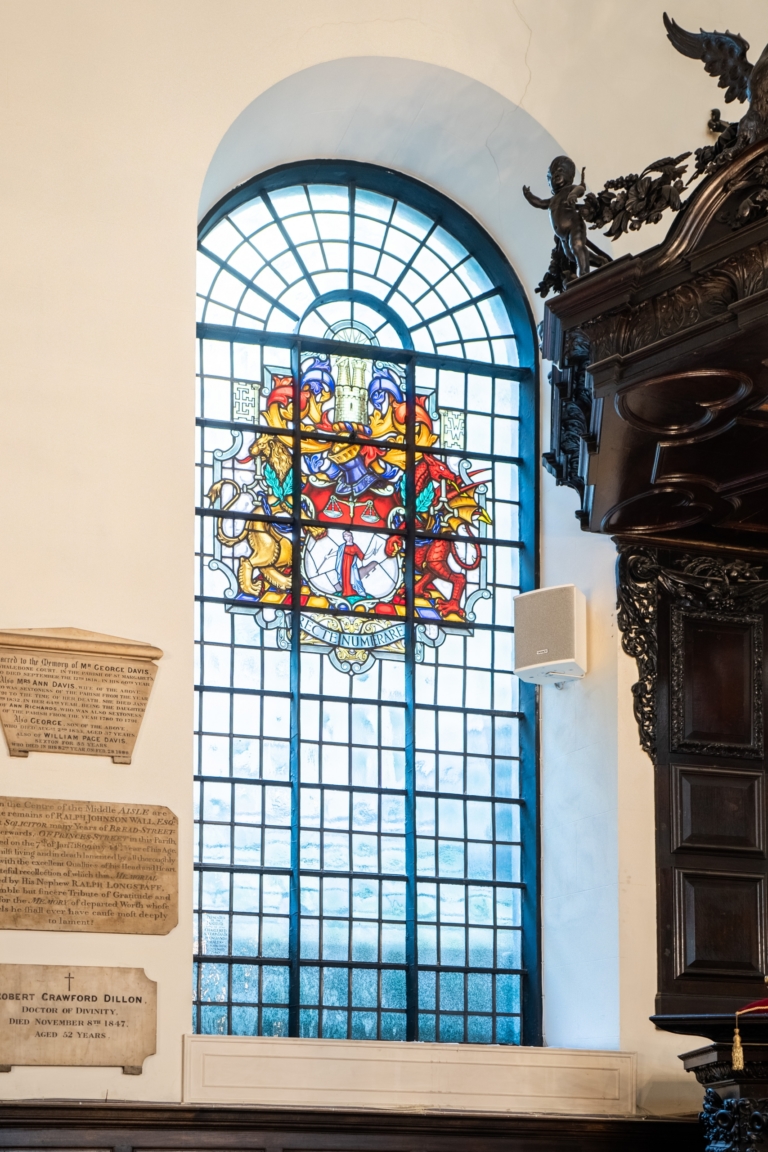
6b: Institute of Chartered Accountants in England and Wales
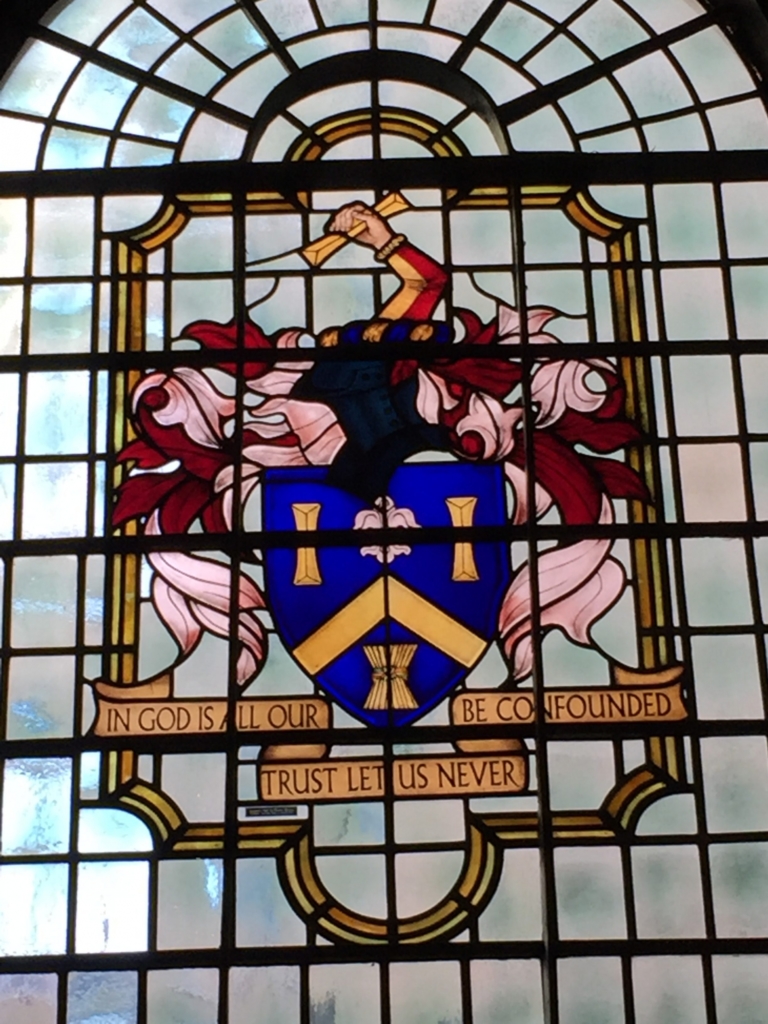
6c: The Worshipful Company of Tylers and Bricklayers
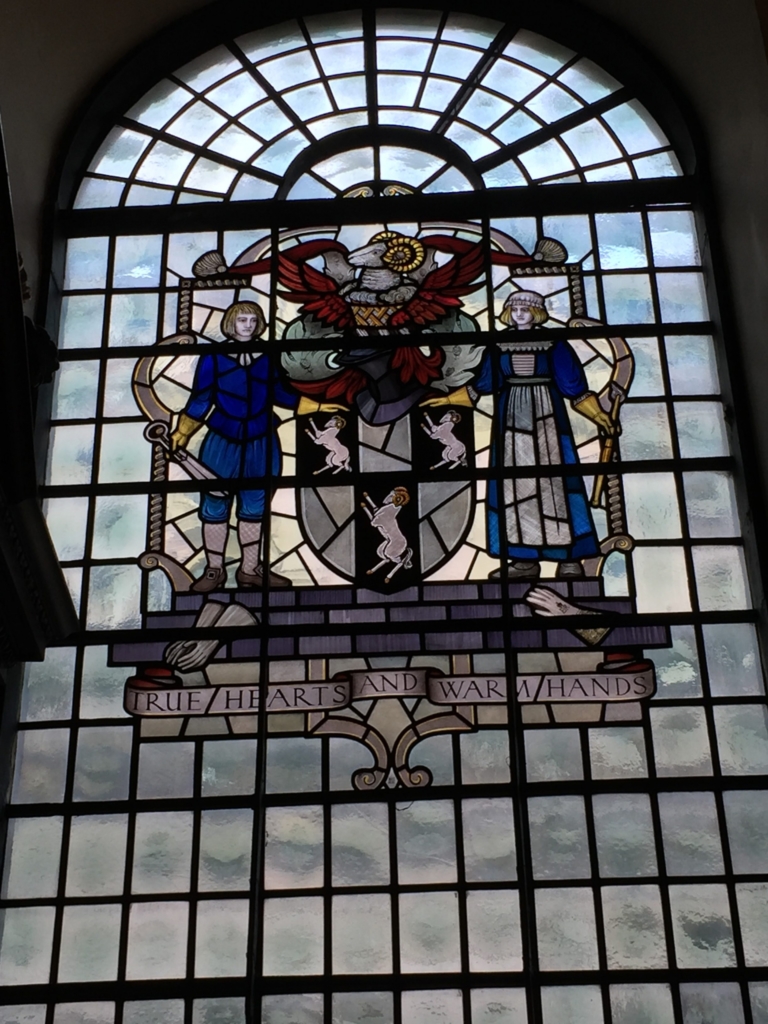
6d: The Worshipful Company of Glovers of London

6e: The Worshipful Company of Scientific Instrument Makers
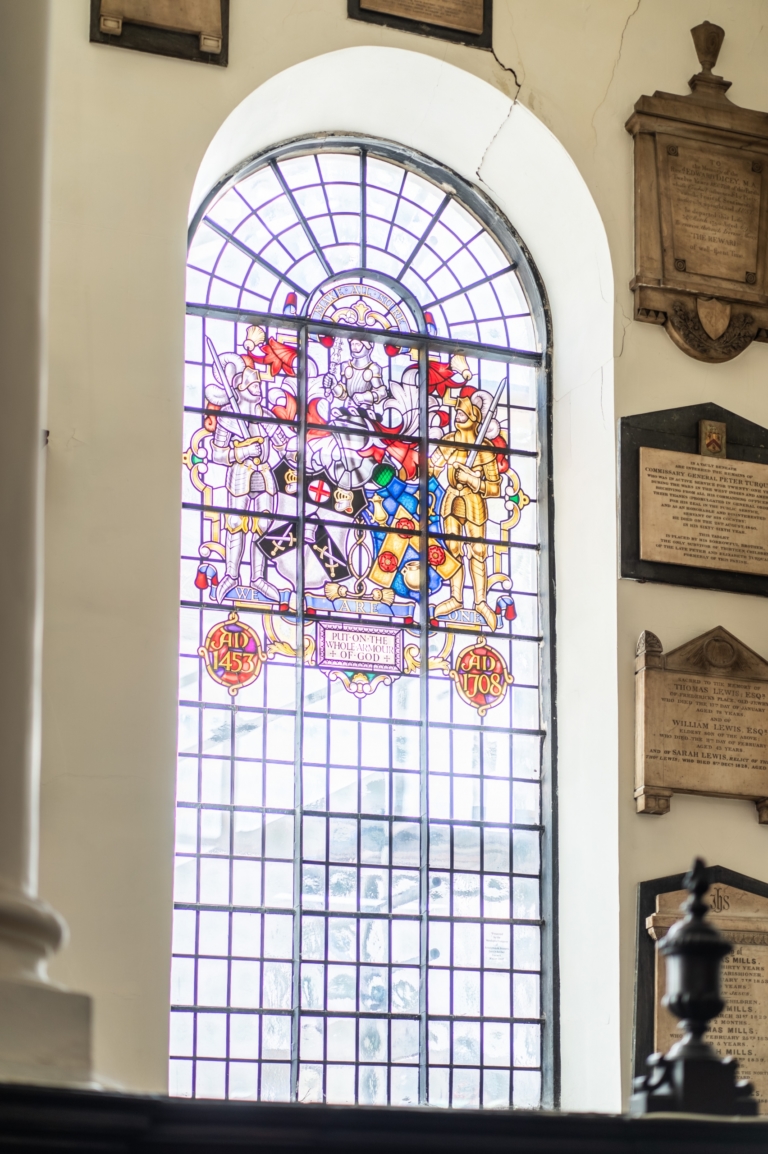
6f: The Worshipful Company of Armourers and Brasiers
7. Paintings of Moses and Aaron
7. Paintings of Moses and Aaron
7. Paintings of Moses and Aaron
Paintings of Moses and Aaron
The paintings of Moses and Aaron on either side of the Communion Table are painted on wood panels which fill blocked windows. The paintings date from c.1700 and came from St Christopher-le-Stocks, Threadneedle St, when it was demolished in 1781 by Act of Parliament.
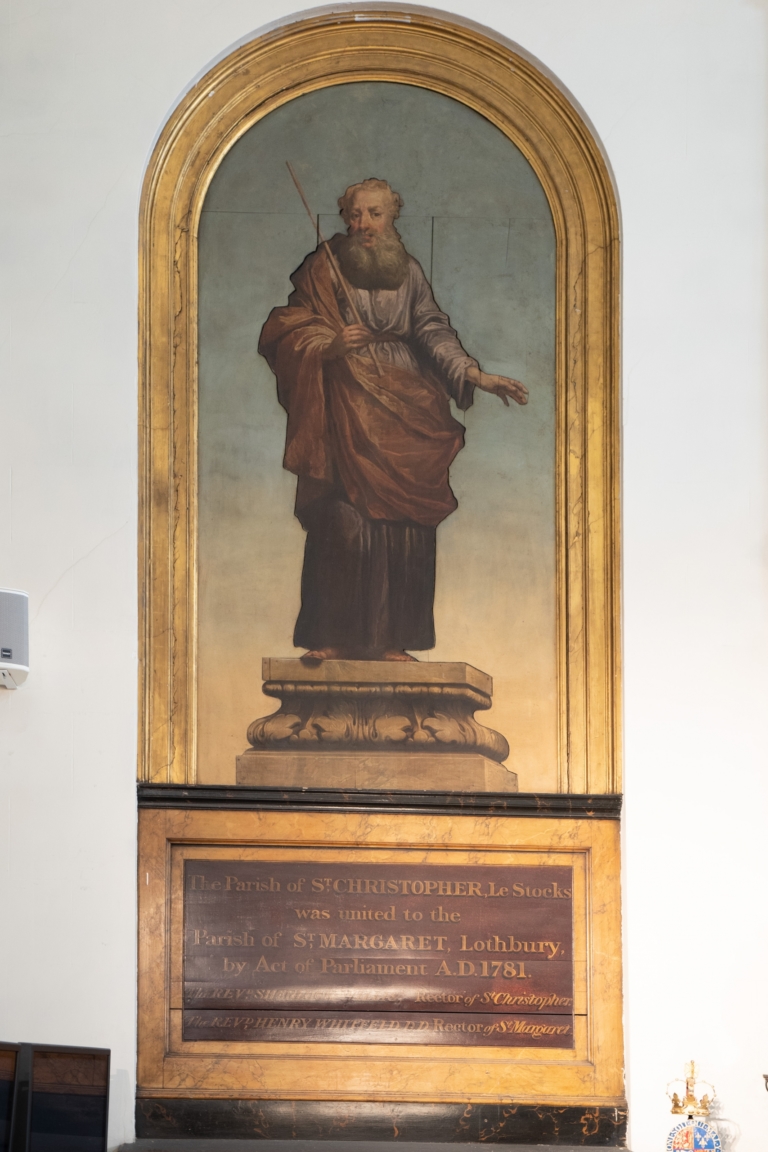
Painting of Moses
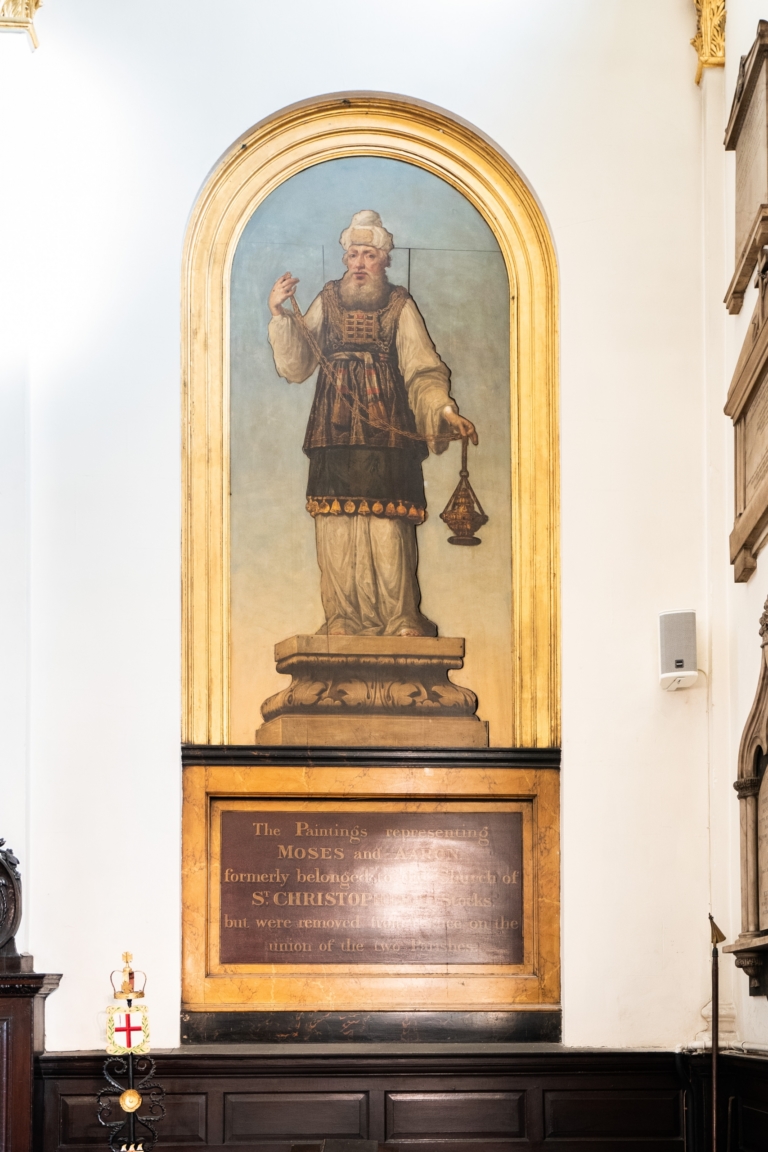
Painting of Aaron
8. Organ
8. Organ
8. Organ
Organ
The organ of 1801 was built by George England and was also originally from St Olave, Old Jewry. Although restored in 1984, it retains its original case and much of its original pipe work.
George Pike England (ca.1765–1816) was one of the main organ builders in England during the late 18th and early 19th centuries. He was the son of George England (organ-builder) and Mary Blasdale. He married Ann Wilson on 13 Oct 1789 in St Pancras Parish Church.
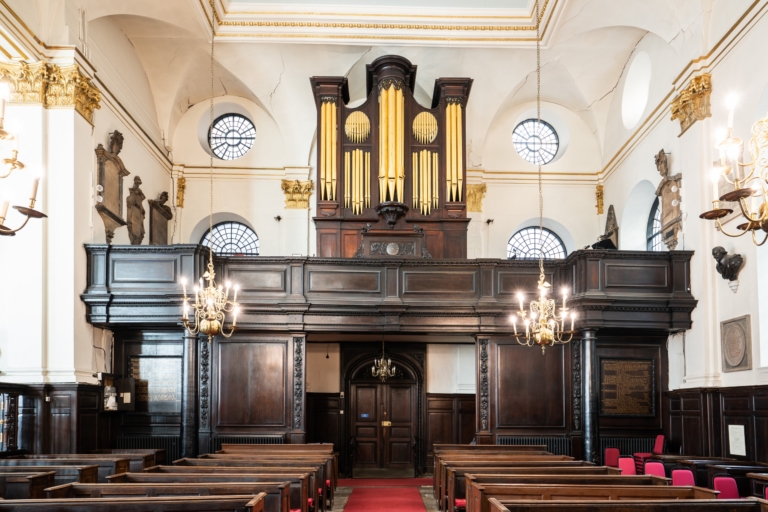
The organ
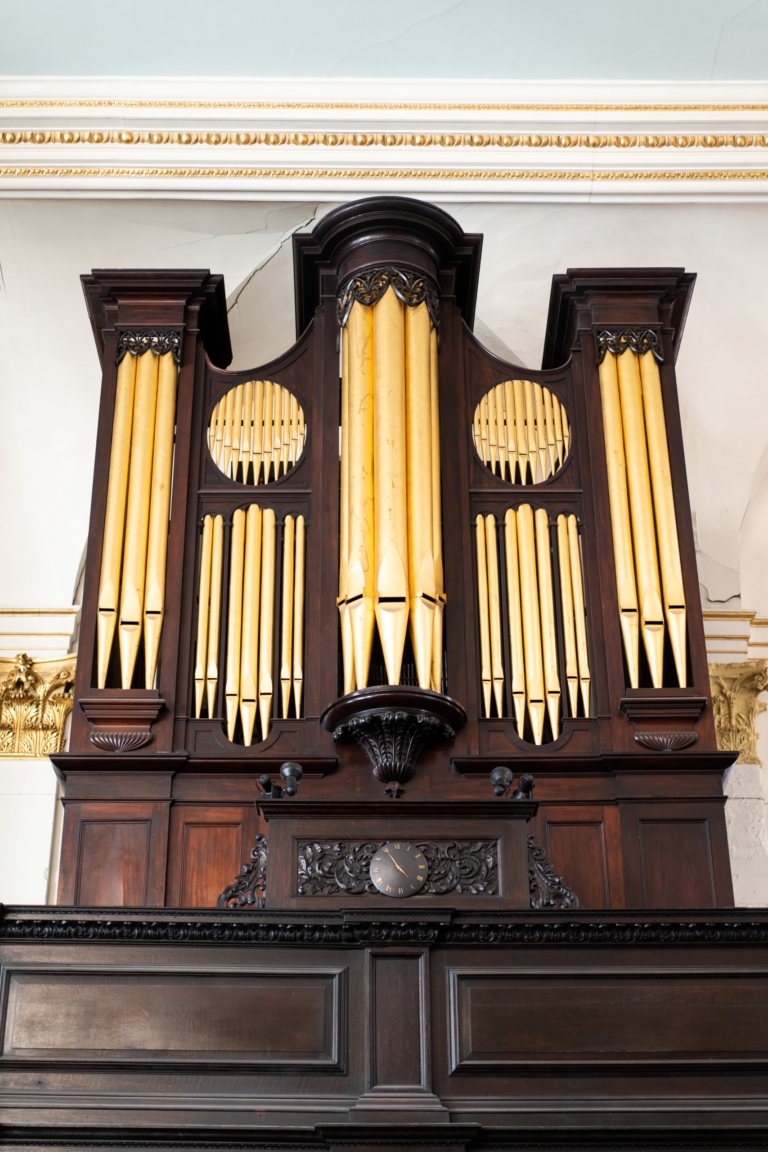
The organ
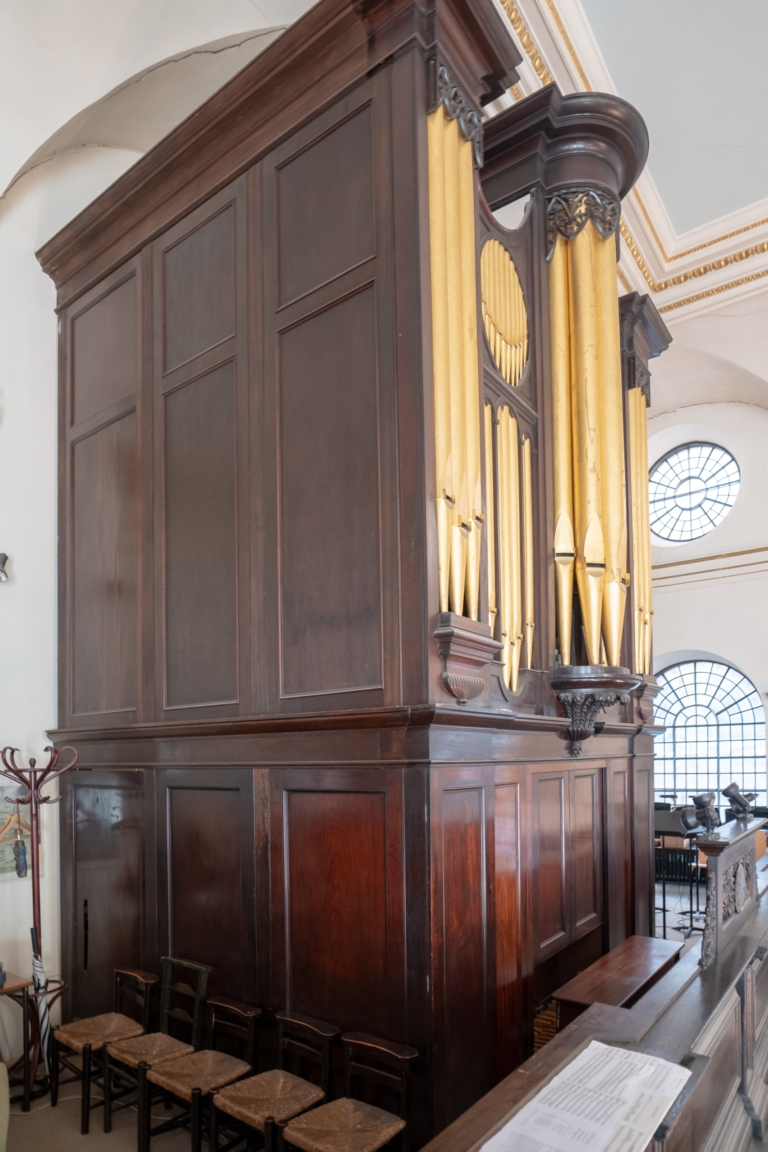
The organ
9. Bust of Peter Le Maire
9. Bust of Peter Le Maire
9. Bust of Peter Le Maire
Bust of Peter Le Maire
The bust of Peter Le Maire, which dates from 1631, came from St. Christopher Le Stocks, Threadneedle Street. It is probably by Hubert Le Sueur, who modelled the equestrian Statue of Charles I at Charing Cross.
The following appears on the wall at St Margaret’s, adapted from a translation of a statement in French made in 1920, by Octave Jean Albert Ghislaine le Maire, member of the Archaeological Society of Maline, Belgium. “Peter le Maire, Knight, was born about 1593, probably in London. He died a Bachelor in 1631, at the age of 38, and was buried in the N.E. corner of the Choir of the Church of St Christopher le Stocks in London (on part of the site of the Bank of England), where his bronze bust, portraying him in Armour, was placed. This bust was removed later (about 1781) to the Church of St Margaret, Lothbury, where it is still (1920) to be seen on the top of a cupboard in the lobby at the West end of the Church.”
Peter le Maire had been knighted by James I at Royston, Hertfordshire in July 18, 1624. He made a Will which was registered by his Brother-in-Law, Sir Francis Crane, twice Member of Parliament. Sir Francis Crane founded the (famous) Mortlake Tapestries, in 1631, and then resided in the Parish of St Botolph, Aldersgate, London. Amongst other legacies, Sir Peter le Maire left an annuity of £5 to the Church of St Christopher le Stocks, to be distributed among the poor of the Parish.
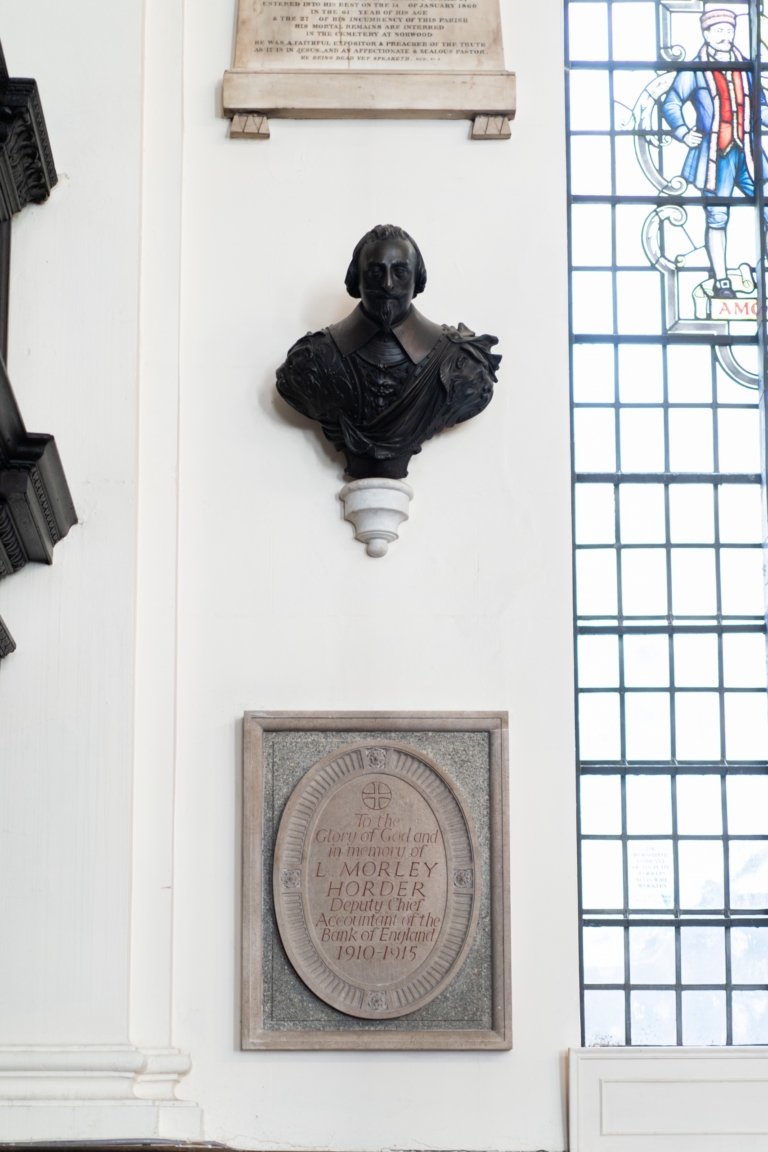
Bronze Bust of Peter Le Maire
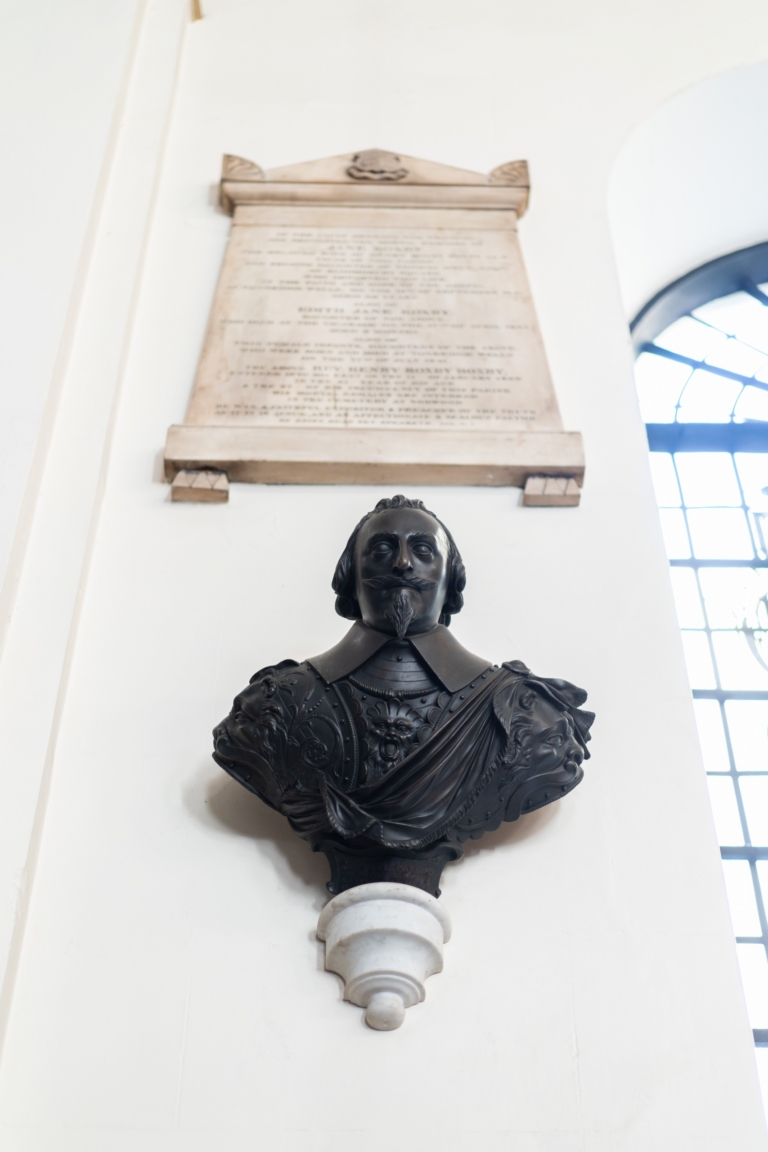
Bronze Bust of Peter Le Maire
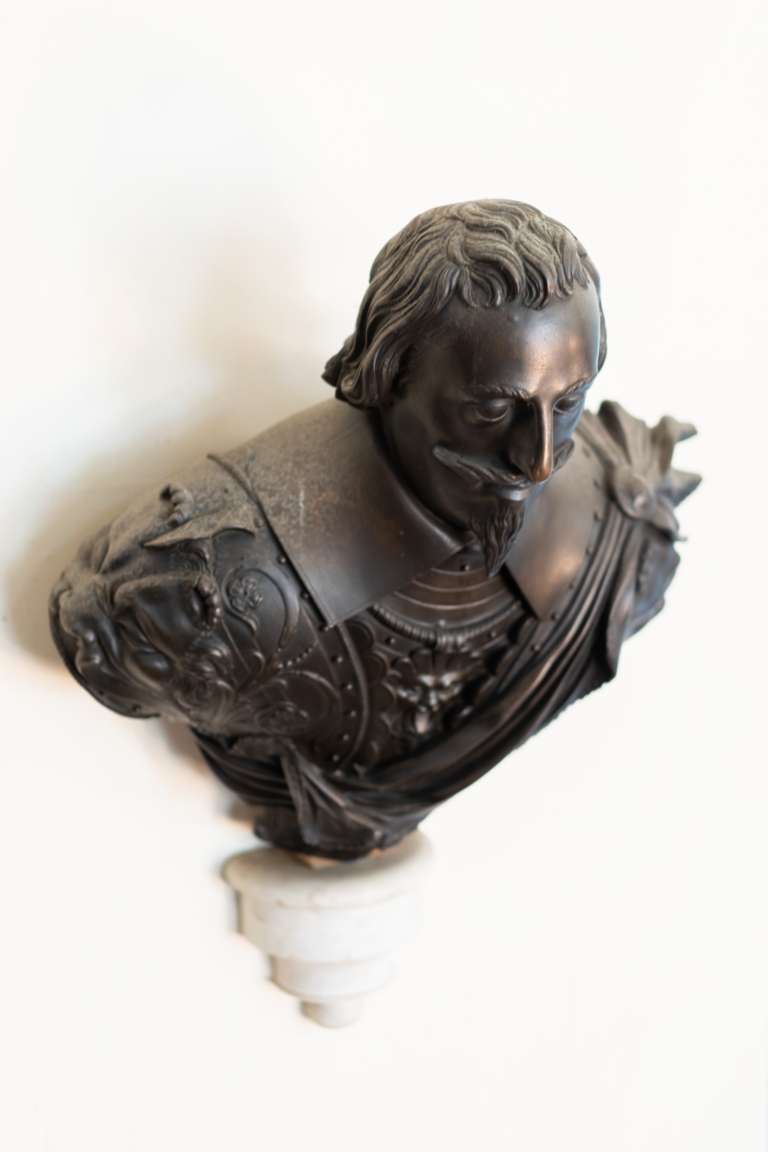
Bronze Bust of Peter Le Maire
